November 1986 (or maybe December). The Mets had just won the World Series. I was waiting in line with a few dozen other people freezing their butts off outside Groo’s Shoes in Vails Gate, NY. We were suffering for a chance to meet one of our heroes. No, not Keith or Gary or Dwight or Darryl. Not even Mookie or MVP Ray. We were there for relative newcomer and backup infielder Howard Johnson.
This was my first trip to an autograph signing event and certainly the coldest. I brought with me Johnson’s 1986 Topps card to have signed; my brother brought a baseball. I thought it was silly to bring something as generic as a baseball, but my collection of autographed baseballs that followed changed my mind on that matter. It’s almost as if I made note of that thought just to taunt myself with it later. The mind can be so cruel.
I’m not sure when we got there, when the event was scheduled to begin, or how long we were waiting outside, but it sure felt like an eternity. We briefly got our hopes up when we saw a white Rolls Royce drive by (because baseball players are all extravagantly wealthy compared to us commoners), but the wait continued long after that. A question inside later confirmed that the Rolls Royce was, in fact, not carrying the World Series champion.
Eventually, the doors opened, objects were signed, words were exchanged, and we all went our separate ways. Johnson went on to spend the next six seasons with the Mets, making the 30/30 club three times (back when that meant something) but never again playing in the World Series. My second 86 Mets autograph soon followed; Christmas brought me a Gary Carter autographed baseball (my brother got a Keith Hernandez, so I of course was envious; Carter then became my default favorite player). I went on to get several more autographs from various players over the next decade, never again getting a card signed (my thousand or so other autographed cards were all obtained through the card companies themselves many years later).
This was the start of a major boom in the card collecting hobby, the likes of which have never again been seen. By the early ’90s, card shows were a regular occurrence all over the region, typically one or more every month in the summer (a show every weekend wasn’t all that uncommon). They were hosted in schools, churches, fire stations, malls, event halls, fitness centers, and anyplace else with sufficient space. As the hobby shifted focus into premium cards and inserts, the shows were the place to be for all of the latest hot products. At about the same time, our local card shop went bust, leaving us with several boxes of early ’80s cards (mostly commons) as a parting gift for supporting them to the end.
While mall shows were always guaranteed lots of foot traffic, the smaller shows needed something extra to draw in the crowds. From time to time, these shows would get a retired player to sign autographs for a small fee. For usually about 2 or 3 dollars, a kid could get something signed by someone who may have last played long before they were born. Who were they? Damned if I knew at the time. From Hall of Famers to guys who barely broke into the majors, they all signed autographs for old fans and idiot kids alike.
My hand-me-down Don Money glove was dry and cracking somewhere in the bookcase by the front door. The box of bats in the basement was collecting dust and cobwebs. My brief playing days were behind me, but there was still a bag of brand-new balls in the closet. Instead of waiting for an appointment with a bat, these balls were destined for encounters with pens and markers. We kept plenty on hand and brought a few along to every show where a signing would be taking place. Sixteen times we went through this ritual, yielding a dresser drawer full of signed balls.
It would have been seventeen if not for a colossal screw-up on my part. It was another small card show like any other, in some random event hall somewhere. They were taking money at the door, so I paid my $3 without a thought; entry fees were common for these kinds of shows. I attempted to hand my ticket to the person at the inner door, but that was when I found out that I had just paid for an autograph. And I didn’t bring anything to have signed.
I’m not sure how I was caught so off guard. Had it been a while since the last signing event? Did I just not care anymore? I don’t even remember who was signing that day; I had forgotten long before arriving home empty-handed. It could have been a Hall of Famer, a random local, some minor Yankees star, or someone from the 1969 Mets. I really hope it wasn’t that last one. Ron Swoboda, if that was you, can I still cash in that ticket? I’m sure I still have it here somewhere…
The final tally was impressive in its day, but less so with loads of autographed cards in every baseball card product from the last 12 years. Seventeen autographs from in-person signings, plus one that my brother attended without me and two mid-90s draft picks from local high schools that my father obtained. Four were from the first Mets championship team – Tommie Agee, Jerry Grote, Cleon Jones, and Ed Kranepool.

Howard Johnson and Lee Mazzilli represented the second Mets championship team.
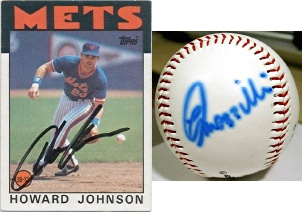
Three more, Mike Torrez, Dave Telgheder, and future manager Willie Randolph, had played for the Mets.
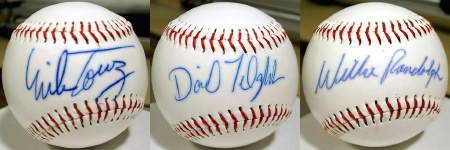
Four were Hall of Famers – Bob Feller, Catfish Hunter, Phil Rizzuto, and Enos Slaughter.

Lou Piniella was between jobs after a brief stint managing the Reds that included an improbable championship run. Two more, Don Larsen and Bobby Thomson, were famous for brief heroics.
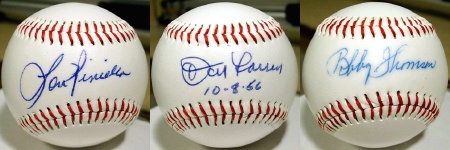
Joe Ausanio and Mike Bertotti, well, they were baseball players. Finally, Ryan Balfe and Dermal Brown were drafted out of high school but never made it big; Balfe didn’t make it past AAA and Brown spent several years as a high-ranking prospect (he made Baseball America’s top 100 prospect list four years in a row), but fizzled out at the major league level.

As with anything else, this era had to come to an end. By the mid-90s, random signings had given way to more big-name affairs at malls (and prices were up to a whopping $5 per autograph!). Life goes on, but the card shows couldn’t last, at least not for me. The last trip into the bag of balls in the closet came, fittingly, for another 1986 Met, Lee Mazzilli. There was no card show or associated event this time, just an ad in the paper announcing that Lee Mazzilli would be signing autographs at Filene’s at the mall. While confused, I was just thrilled to get another player’s autograph. Not knowing what to expect, I walked into Filene’s, ball in hand. There sat Mazzilli at a small table in the main aisle, signing autographs for a couple of people waiting in line. It was nothing like the event in 1986 or even any of the card show signings, just a guy at a table with a blue marker. After the briefest of waits, I handed over the ball and he signed it, not on the sweet spot like everyone else, but on the end of one of the leather flaps. Nothing about this final autograph was normal.
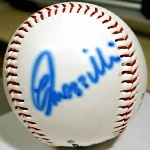
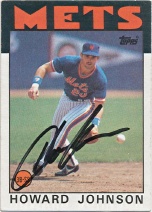
Comments are closed.